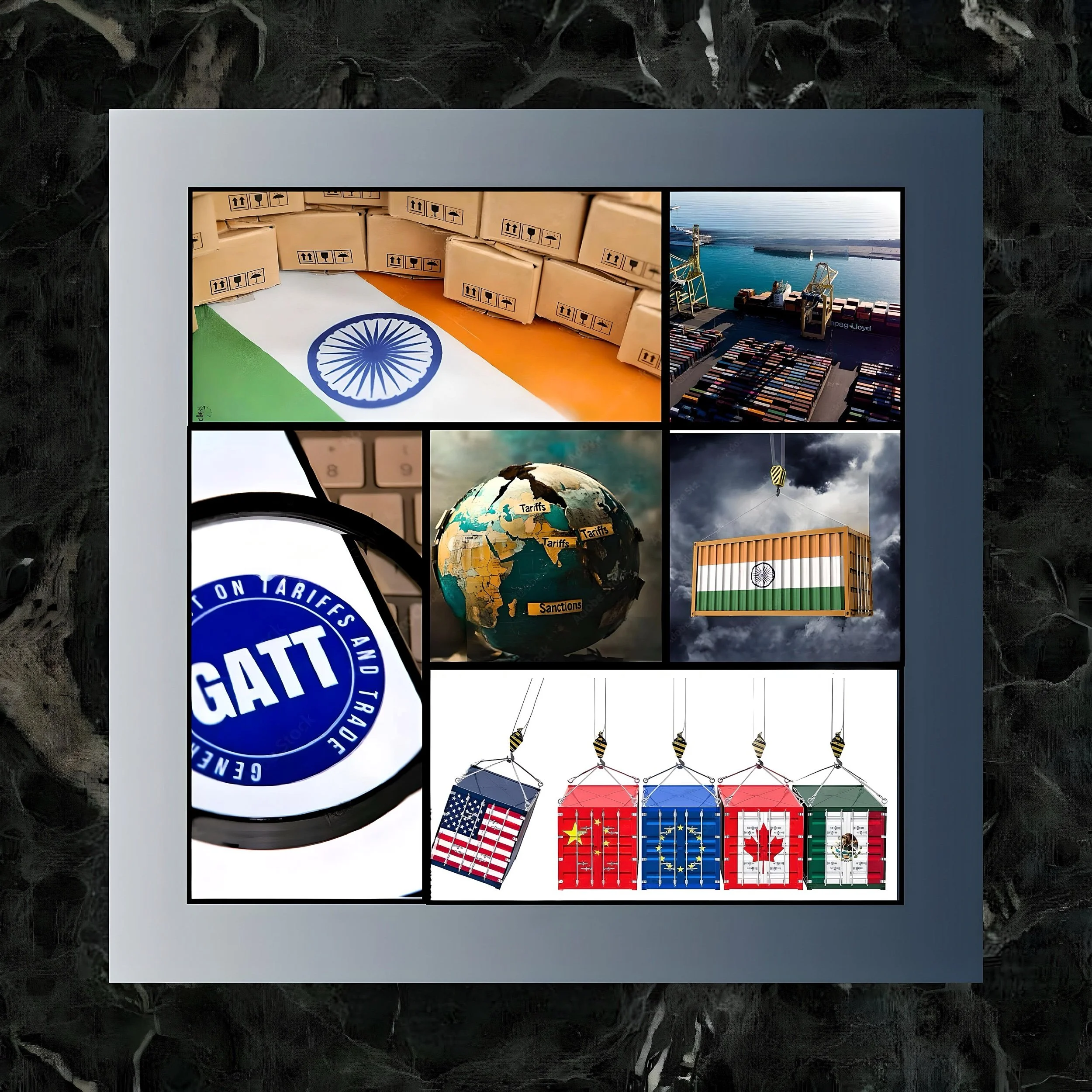The Cascading Impact of 2025 Tariffs on Global Supply Chains: Disruptions, Adaptations, and Strategic Shifts
Introduction
The 2025 U.S. tariff measures—25% on imports from Canada and Mexico and 10% on Chinese goods—have triggered a seismic reconfiguration of global supply chains.
These policies, coupled with retaliatory actions from trading partners, reshape trade routes, inflate costs, and accelerate strategic shifts across industries. Below is a detailed analysis of the multifaceted impacts on global supply networks.
Immediate Operational Disruptions
Cost Escalations and Margin Pressures
Tariffs directly increase the landed cost of imported goods. For example:
Automotive sector
A 25% tariff on Mexican auto parts raises production costs by 8–12%, translating to $2,500–$4,000 per vehicle.
Electronics
Semiconductor tariffs could spike iPhone production costs by 6–9%, pressuring Apple’s margins despite its $10 billion Texas expansion.
Companies face a dilemma
Absorb costs (eroding profits) or pass them to consumers (risking demand contraction). Retailers like Target and Walmart anticipate 5–7% price hikes on electronics and apparel.
Pre-Tariff Stockpiling and Inventory Volatility
Anticipating tariffs, firms engaged in “pre-loading,” hoarding $20 billion in excess inventory by Q4 2024. This created temporary demand surges, distorting logistics networks:
Port congestion
U.S. West Coast ports saw a 22% volume spike in January 2025, delaying shipments by 10–14 days.
Warehousing strain
Vacancy rates fell to 3.8%, the lowest since 2020, raising storage costs by 18% year over year.
Strategic Supply Chain Reconfigurations
Nearshoring and Regionalization
To mitigate tariff exposure, companies are relocating production closer to demand centers:
Mexico’s manufacturing boom
FDI surged 34% in Q1 2025 as firms like Tesla and Whirlpool expanded Monterrey plants.
U.S. reshoring
Semiconductor investments under the CHIPS Act (e.g., TSMC’s Arizona fab) aim to boost domestic capacity from 12% to 19% by 2030.
However, reshoring faces hurdles: U.S. labor costs are 4–6x higher than Vietnam’s, and 78% of manufacturers report skilled worker shortages.
Supplier Diversification and “China Plus One”
The 10% Chinese tariff accelerated diversification
Vietnam and India
Apple now sources 18% of components from Vietnam (up from 5% in 2023), while pharma giants like Pfizer shifted API production to Hyderabad.
ASEAN pivot
ASEAN’s share of U.S. imports rose to 14% in 2025 (from 9% in 2022), driven by textiles and electronics.
Yet, alternatives lack scale: China still produces 65% of rare earth metals and 40% of consumer electronics.
Trade Route Reengineering
Tariffs are rerouting global logistics:
Red Sea bypasses
12% of Asia-Europe cargo now transits via Africa’s Cape of Good Hope, adding 14 days and $1 million per voyage.
Rail resurgence
China-Europe rail freight volumes grew 27% in 2025, though capacity constraints limit growth.
Sector-Specific Vulnerabilities
Automotive
Fragmented North American Networks
The 25% tariff on Mexican auto parts undermines USMCA’s regional value content rules:
Production shifts
Ford idled its Ohio EV plant, relocating battery module assembly to Brazil.
Job losses
34,000 U.S. auto jobs are at risk, concentrated in Michigan and Texas.
Semiconductors
Costly Rebalancing
Despite $52 billion in CHIPS Act funding, U.S. fabs face delays:
TSMC’s Arizona delays
Production started to be pushed to 2027 due to permit disputes and skilled labor shortages.
Price hikes
NVIDIA’s H100 GPUs rose 15% in Q1 2025, reflecting tariff-driven silicon wafer costs.
Agriculture
Export Market Erosion
Retaliatory tariffs target politically sensitive sectors:
China’s 15% soybean levy
Prices fell to $10.50/bushel, threatening 300,000 Midwest farms.
Canada’s dairy tariffs
Wisconsin cheesemakers face $600 million in lost exports.
Macroeconomic and Geopolitical Fallout
Inflation and Consumer Impact
Tariffs are projected to elevate U.S. inflation by 1.8% in 2025, with:
Energy
Gasoline prices are up 12% due to reduced Canadian crude imports.
Groceries
Poultry (+7%) and dairy (+5.5%) spikes straining household budgets.
WTO System Erosion
Canada and China’s WTO complaints against U.S. tariffs risk paralyzing the body. A ruling against the U.S. could prompt withdrawal, fragmenting global trade governance.
Alliance Strains
USMCA fragility
Mexico’s threatened 15% crude export cut to U.S. refineries endangers 550,000 bpd of heavy oil.
EU auto tariffs
A 25% EU duty on $286 billion of U.S. vehicles targets GOP strongholds like South Carolina.
Adaptive Strategies for Resilience
Predictive Analytics and Scenario Planning
Firms using AI-driven tools (e.g., Kinaxis Maestro) reduced tariff impacts by 23% via
Cost modeling
Simulating 10–50% tariff scenarios to optimize sourcing.
Lead time adjustments
Rerouting 38% of Chinese shipments through ASEAN hubs.
Supplier Collaboration and Contract Renegotiations
Cost-sharing
Apple secured 15% component price cuts from Foxconn by extending payment terms.
Localization incentives
Tesla’s $3,000/vehicle subsidy for Mexico-made parts.
Policy Leverage and FTZ Utilization
Foreign Trade Zones (FTZs)
GM saved $210 million in 2024 by deferring tariffs on Mexican engine imports.
Lobbying exemptions
Semiconductor firms secured a 2-year tariff pause on rare earth metals.
Conclusion
A New Era of Fragmented Trade
The 2025 tariffs pivot from globalization to regionalized, politicized supply chains. While firms that diversify suppliers, harness predictive analytics, and lobby for exemptions will mitigate risks, the broader trajectory points to:
Prolonged inflation
Stubbornly high consumer prices as reshoring matures.
Strategic decoupling
U.S.-China tech bifurcation and EU nearshoring deepening economic blocs.
Innovation tradeoffs
R&D budgets diverted to tariff mitigation, slowing AI and clean energy breakthroughs.
As Wood Mackenzie notes, “Tariffs are reshaping trade faster than supply chains can adapt.” The challenge for businesses is no longer avoiding disruption but establishing agility to thrive within it.





